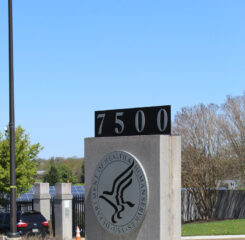CMS Publishes Guidance for HCBS FMAP Increase
On May 13, CMS published guidance for state Medicaid agencies to implement the enhanced federal medical assistance percentage (FMAP) provision for home and community-based services (HCBS) in the American Rescue Plan. An estimate from the Congressional Budget Office (CBO) suggests that the FMAP increase (of ten percentage points across all states and DC) represents an investment of $12.7 billion to Medicaid HCBS.
The guidance outlines how states can go about receiving the funds, what strings are attached to these dollars, how they can be spent, and other considerations. This article is meant to summarize the guidance for LeadingAge members and offer potential next steps as the states continue planning how to use these funds.
Quick Summary
Here are the top lines from the guidance:
- All HCBS, including PACE, waiver (e.g., adult day, assisted living), and home health/personal care, are included in the enhanced FMAP.
- States have until March 31, 2024 and have broad flexibility for how to spend the dollars- but must use them for HCBS. Provider rate increases and supplemental payments, among others, are specifically allowed uses of the dollars.
- Retainer payments are back. The guidance allows states to apply for up to 3 30 day periods of retainer payments for calendar year 2021 backdated to January 1.
- To demonstrate compliance with program rules, states receiving the dollars cannot restrict eligibility, eliminate or narrow services, or cut provider rates across HCBS programs until the dollars are spent.
- States have been planning how to use the funds and must make reports to CMS by mid-June- now is the time for LeadingAge members to engage your state agencies if not already doing so.
Covered Services
As specified in the American Rescue Plan, the guidance outlines which service types and authorities are included in the enhanced FMAP. Services of interest to LeadingAge members include state plan home health, personal care, and private duty nursing. All HCBS authorities are also covered, including 1115, 1915(c), 1915(i), 1915(j) and 1915(k). Most adult day services and assisted living covered by Medicaid are covered through these authorities. PACE organizations are included for the Medicaid capitated rate (e.g., no enhanced FMAP for PACE Medicare capitation). The enhanced FMAP applies both to states with fee-for-service and managed care environments.
Timelines
The American Rescue Plan includes the term for the enhanced HCBS FMAP: April 1, 2021-March 31, 2022. The CMS guidance clarifies that while states have one year to receive the enhanced FMAP funds, they have three years to spend them down, and can use the dollars through March 31, 2024.
“Supplement, Not Supplant” in Practice
The legislation creating the enhanced FMAP includes language stating that states must use the funds to “supplement, not supplant” existing state dollars for Medicaid HCBS. The guidance clarifies how states will demonstrate this principle. Per CMS, states must comply with the following beginning April 1, 2021 through the time the enhanced dollars are fully spent:
- Not impose stricter eligibility standards, methodologies, or procedures for HCBS programs and services than were in place on April 1, 2021;
- Preserve covered HCBS, including the services themselves and the amount, duration, and scope of those services, in effect as of April 1, 2021; and
- Maintain HCBS provider payments at a rate no less than those in place as of April 1, 2021.
Notably, temporary rate increases provided through Appendix K or other COVID-19-related emergency amendments are not subject to the above requirements, and can expire without the state being penalized for noncompliance with the third bullet.
“Enhance, Expand, or Strengthen HCBS” in Practice
The American Rescue Plan calls for states to use the enhanced dollars to enhance, expand, or strengthen HCBS, and the guidance outlines how states can go about doing so. Specifically, states must implement one or more activities toward improving HCBS. CMS gives states leeway with respect to how to do this, stating “CMS recognizes that states are in a unique position to identify and tailor activities that align with state goals and priorities.”
The guidance provides a non-exhaustive list of activities states can use the enhanced FMAP funds for, including short-term projects to address the COVID-19 pandemic, and longer-term investments to rebalance state LTSS systems. These are found starting on page 19 in the guidance, with select items of interest to LeadingAge members below.
COVID-19 Related HCBS Needs
Payment Rates:
- Increase rates for home health agencies, PACE organizations, and agencies or beneficiaries that employ direct support professionals (including independent providers in a self-directed or consumer-directed model) to provide HCBS under the state Medicaid program.
- CMS expects that the agency, organization, beneficiary, or other individuals that receive payment under such an increased rate will increase the compensation it pays its home health workers or direct support professionals.
- An increase to the PACE Medicaid capitation rate can be implemented as part of the state’s regular annual rate update or on a temporary basis as an interim rate increase, but must comply with existing submission, review, and approval requirements. States are not permitted to provide supplemental funding to PACE organizations outside of the PACE Medicaid capitation payment due to regulatory requirements.
Leave Benefits
- Provide paid sick leave, paid family leave, and paid medical leave for home health workers and direct support professionals that are not already included in the service rate/rate methodology.
Specialized Payments
- Provide hazard pay, overtime pay, and shift differential pay for home health workers and direct support professionals that are not already included in the service rate/rate methodology.
- Provide adult day centers with funding to make physical, operational, or other changes to safely deliver services during the COVID-19 PHE.
Workforce Recruitment and/or Training
- Conduct activities to recruit and retain home health workers and direct support professionals.
- Offer incentive payments to recruit and retain home health workers and direct support professionals.
- Provide training for home health workers and direct support professionals that is specific to the COVID-19 PHE.
State HCBS Capacity Building and LTSS Rebalancing Reform
New and/or Additional HCBS
- Provide new or additional Medicaid HCBS services or increase the amount, duration, or scope of HCBS; funding must be used to supplement not supplant existing services.
Developing Cross-System Partnerships
- Creating incentives for managed care plans or providers to develop partnerships with community-based organizations, social service agencies, counties, housing agencies, and public health agencies.
- Promoting provider collaborations by requiring the formation of and participation in regional/local provider networks.
- Building Medicaid-housing partnerships.
Expanding Provider Capacity
- Creating financial incentives to expand the number, retention rates, and expertise/skills of the direct care workforce.
- Providing nursing facilities or other institutional settings with funding to convert to assisted living facilities or to provide adult day services, respite care, or other HCBS.
Expanding Use of Technology and Telehealth
- Making investments in infrastructure to facilitate incorporation of HCBS into interoperable electronic health records (EHRs).
State Reporting Requirements
A condition of the enhanced FMAP is reporting requirements that state Medicaid agencies must complete, including both initial and ongoing plans and reports.
States must submit the initial report to CMS within 30 days of May 13. The initial report includes a spending plan includes an estimate of how much the enhanced FMAP will be worth from April 1, 2021 – March 31, 2022, and how the state plans to spend the dollars through March 31, 2024.
On an ongoing basis, states must submit reports quarterly to provide updates on enhanced FMAP allocation estimates, how the money is/will be used, outcomes, challenges and sustainability. States must submit quarterly reports until they spend down the enhanced FMAP dollars.
CMS will post reports on its website.
Managed Care
The guidance directs state agencies on how to claim funding for the enhanced FMAP for managed care payments. Per CMS, only the portion of the capitation rate that is attributable to covered services (described above in this article) can received the enhanced FMAP. The activities outlined earlier in this article apply to states with managed HCBS programs.
Retainer Payments
Recognizing the length of the pandemic, CMS through this guidance is now allowing states to apply for up to three 30 day periods of retainer payments for HCBS providers. These payments must follow previous retainer payment guidance. 2021 retainer payments may backdate to January 1, 2021.
States with managed care may seek to and/or continue to require managed care plans to make retainer payments in compliance with existing federal regulation described in the guidance.
Next Steps
The enhanced FMAP represents a critical investment in Medicaid HCBS, and we encourage states to act swiftly toward implementing activities that will strengthen home and community-based services.
We encourage our members to work closely with their state agencies to help inform how these dollars will be used. We will continue to work with and inform our members and state partners as the enhanced FMAP dollars begin to actually flow and bolster the critical supports HCBS providers deliver through and beyond the pandemic.
Members may contact Brendan Flinn (bflinn@leadingage.org) of the LeadingAge staff with questions or updates on what state agencies do with the funds.

Most Recommended
October 15, 2025
 Shutdown Week Three: Impact of Ongoing Closure on Affordable Housing
Shutdown Week Three: Impact of Ongoing Closure on Affordable Housing
December 10, 2025
Fiscal Year (FY) Funding 2026
October 07, 2025
Immigrant Workforce Matching Program Brings Workforce Relief
Recently Added
December 23, 2025
 CMS Debuts Models: ACCESS, ELEVATE and LEAD
CMS Debuts Models: ACCESS, ELEVATE and LEAD
December 22, 2025
GAO Report: Ensuring Accessible Healthcare
December 19, 2025
House Moves Forward on Affordable Housing Reforms
December 19, 2025



